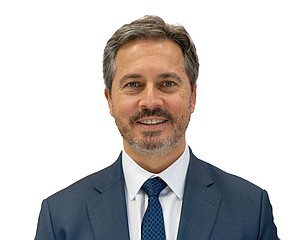1/4/2024

Originally Published: 04 JAN 24 12:00 ET
Updated: 04 JAN 24 13:22 ET
By Bryan Mena, CNN
Washington, DC (CNN) — Latino economist Alberto Musalem has been named as the next president and CEO of the Federal Reserve Bank of St. Louis, the bank announced Thursday.
Musalem, 55, replaces James Bullard, who left the bank on August 14 to become the inaugural dean of Purdue University’s Mitchell E. Daniels, Jr. School of Business.
After completing his 2022 term, Bullard did not vote on monetary policy decisions in 2023. Bullard would have served as an alternate voting member in 2024. Musalem will not be a voting member at the central bank’s policy meetings until 2025.
“As an experienced economist, former Federal Reserve leader, collaborator and communicator, he comes with the exceptional technical expertise and leadership abilities needed to contribute to effective policymaking and advance a large organization in service to the public,” said Carolyn Chism Hardy, who serves on the bank’s board of directors, in a release.
Musalem was previously CEO and co-founder of Evince Asset Management and a senior adviser to the president at the New York Fed. He earned an economics PhD from the University of Pennsylvania, along with master’s and bachelor’s degrees in economics from the London School of Economics. and brings 27 years of experience “in economic policy, finance and markets” to the Fed, the bank said in its announcement.
Born in Bogota, Colombia, Musalem is yet another Latino economist to become a top Fed policymaker, following the confirmation of Adriana Kugler to become a Fed governor in 2023.
Musalem will begin his role on April 2. Kathleen O’Neill Paese, the St. Louis Fed’s first vice president and chief operating officer, will continue to assume Bullard’s duties in the interim. Musalem will then finish out the remainder of Bullard’s five-year term ending on February 28, 2026, at which point he will be considered for reappointment.
Big changes at the Fed
Musalem’s selection highlights the recent churn at the Fed’s policymaking body over the past several months, combined with the different set of Fed officials who have voting power this year.
Cleveland Fed President Loretta Mester is set to retire in June, according to an announcement in November. The search for her successor is ongoing.
In addition to Kugler’s Senate confirmation in September to serve on the Fed’s Board of Governors, Governor Philip Jefferson was confirmed to the role of Vice Chair, Fed Chair Jerome Powell’s number two.
In January, former Obama administration economic adviser Austan Goolsbee took over from retiring Chicago Fed President Charles Evans; and in August, Jeffrey Schmid became the new president of the Kansas City Fed.
This year, the Fed presidents representing the regional banks based in Cleveland, Richmond, Atlanta and San Francisco will be able to cast a vote for policy moves. But in reality, it’s just a matter of which officials wield the most influence. By design, the Fed chair has a lot of sway.
Mester and Bullard were typically seen as the most “hawkish” officials at the Fed, meaning that they backed a more aggressive stance on fighting inflation. With Bullard gone and Mester heading towards the exit, the Fed will soon have fewer hawkish voices.
The top two questions for the Fed right now are: When should the central bank begin to cut interest rates? And how fast should the pace of cutting be?
The Fed is currently balancing the risk that inflation’s descent stalls with the risk that the central bank inadvertently causes undue economic harm.
While it is not yet clear where Musalem stands, his perspective on the economy will become apparent as he participates in public speaking engagements.
The-CNN-Wire
